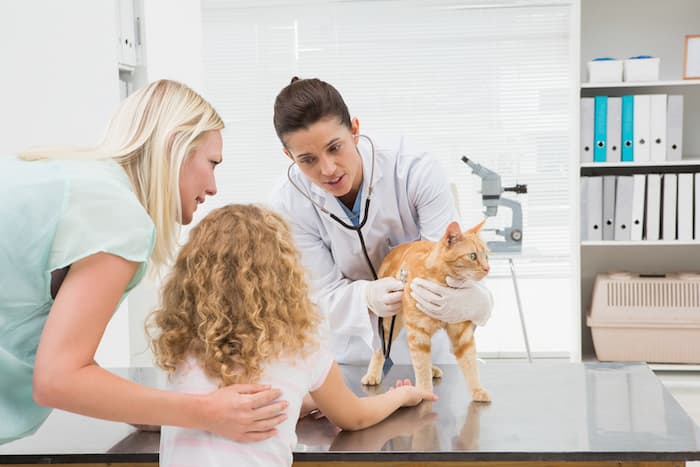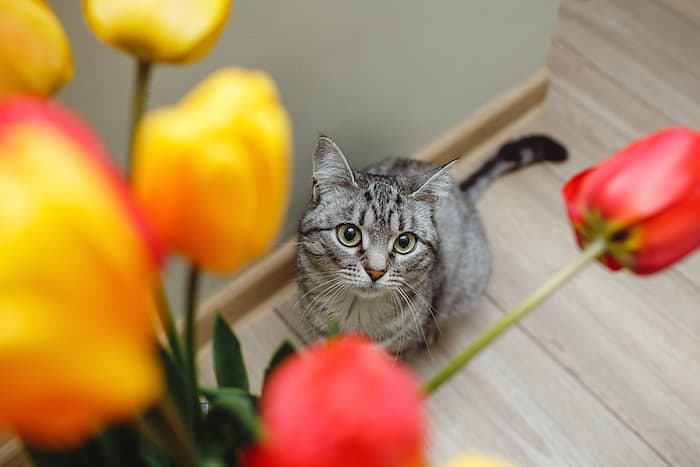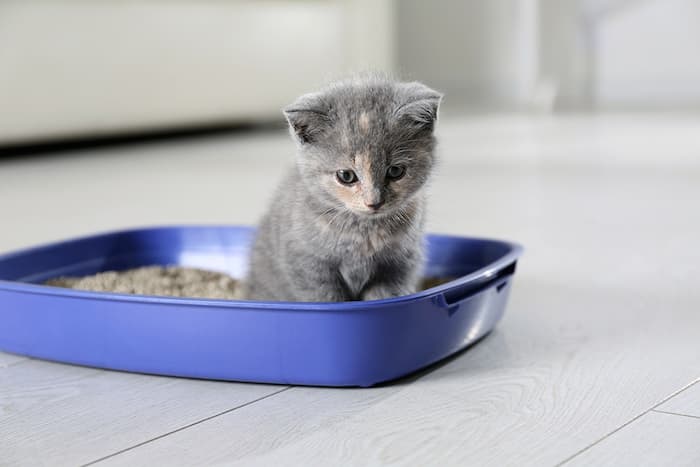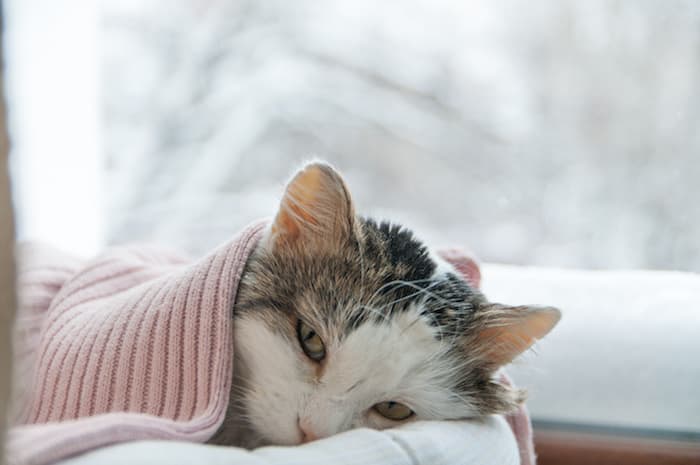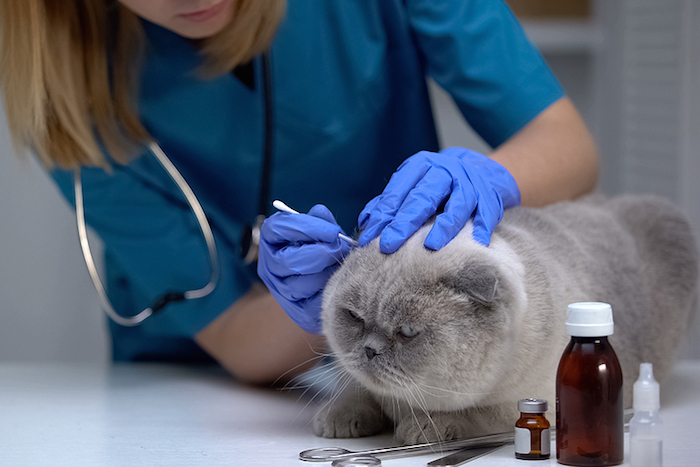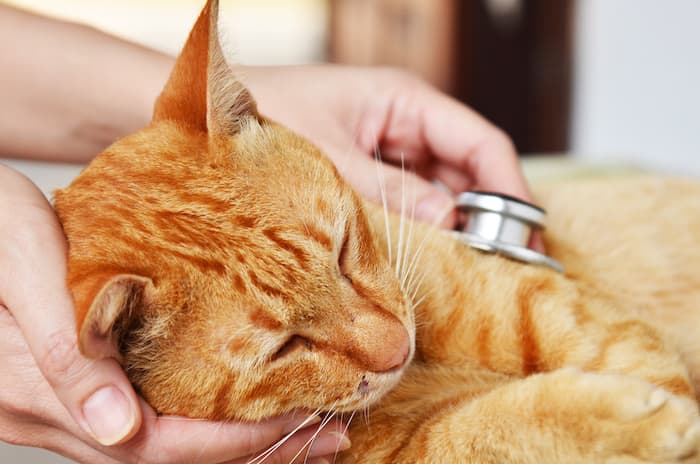Cats can be enduring creatures and often manage to mask their discomfort when they’re sick. In the wild, this instinct can protect them from other dangerous cats or predators. However, House cats have the same tendency to evade vulnerability, despite the only threat being a housemate.
Cats are less likely to show illness because they lack an emotional relationship with their uneasiness and therefore tend to accept the condition and move on. Not until their condition worsens is when their discomfort becomes evident to humans.
“Is my cat sick?”
This is one of the most frequent questions vets are asked. Well, interim vomiting is nothing to worry about, especially if your cat’s health is perfectly fine. This may be due to a slight tummy upset. Long-term vomiting should be a much more significant concern and if the conditions persist, contact your vet or your nearest pet clinic.
- Shortness of breath or rapid breath
- Sudden mood change
- Dilated or constricted pupils
- Less active
- Much less or much more vocal than usual
- Noticeable weight gain or loss
- Bad breadth
- Skin irritation or hair loss
- Discharge from nose or eyes
- Limping or injuries
- Over-grooming or neglecting grooming
- Hiding
- Wounds or swelling
- Inappropriate use of litter box
- Sudden changes in appetite
Why is my cat sneezing?
Cats can sneeze for various reasons such as respiratory infection, a noxious smell, tooth infection or inflammation causing drainage into sinuses, and a simple nose tickle.
There’s no reason to worry about an occasional sneeze. However, if it’s more than rare, make sure to look for patterns. How frequently does it happen in a day? Does it happen in a particular place or during family activities? This will help you determine if your cat is sneezing due to an infection, or an irritant such as perfume or dust, or other prevailing conditions.
However, if sneezing persists, it may be due to an upper respiratory infection or other primary condition, which may require veterinary care.
Why is my cat’s eye-watering?
You may wake up and notice one of your cat’s eyes looks a little odd and wonder if it’s something that requires medical care. Tears help to protect the cat’s eye. However, too much of it, commonly referred to as running eyes, can be a sign of eye infection.
Conjunctivitis is the most diagnosed eye infection in cats. This condition tends to cause pain and discomfort, and if left untreated, can result in loss of vision, eye damage, or even permanent blindness. It is, therefore, vital that the cat receives veterinary treatment.
Why do cats drool?
It’s common for cats to drool while they are purring or kneading. Drooling is often a sign of contentment and relaxation and is commonly normal and one way to show love. Fear or stress may also cause a cat to drool temporarily, such as loud events, vet visits, or car rides.
However, constant drooling may be a sign of a health problem by your cat. All cats should be checked by the vet at least once a year, even if they seem healthy.
Why does my cat have diarrhea?
Diarrhea is not a disease in itself but rather a part of or a sign of other diseases. It may occur as the only sign, as one of many signs of a comprehensive disease problem, or with signs that result from severe or prolonged diarrhea.
Various signs of diarrhea include soiling and staining of the fur around the back end and diet change, leading to changes in the stool. If semi-liquid stools or frequent liquid persist for more than two days, make sure to consult your veterinary. Note that a typical cat poops at least once a day. If healthy, the poop should be deep brown in color and not too soft, too hard, or mushy.
How to tell if a cat has a fever
The most common way to determine if a cat has a fever is to take its temperature. A typical cat’s temperature ranges from 100.4⁰ to 102.5⁰ F. Temperatures above 102⁰ F are signs of fever in cats. A fever high above 106⁰ Fahrenheit can damage the cat’s organs. Visit your nearest vet clinic or contact your vet doctor in case of high fever.
Further Reading:
Caring for Newborn KittensCat Care GuideGrooming a CatHelp a Sick Kitten
How to Treat Common Cat Ailments
Various diseases can be severe for your cat and may therefore need immediate treatment.
How to get rid of fleas on cats
Fleas can transmit deadly diseases to your cat and infest your home within a short period of time. Therefore, getting rid of a flea infestation is your best shot to help your cat evade flea-related problems.
- Treat your pet using flea pills, shampoos and topical treatments, and flea collars for cats
- Regularly treat your home by washing and cleaning your home bedding as well as your pet’s bedding, and use powder or spray on the carpets and upholstery
- Vacuum your entire home
- Contact a proficient flea exterminator company if need be
How to treat a cat that has an eye infection
Eye infection can be treated by cleaning around the cat’s eyes with a cotton ball soaked with warm water, applying compresses to the area to soothe the eyes, and applying prescribed eye drops or ointments.
How to treat a cat that has diarrhea
In most diarrhea cases in cats, it’s usually recommended to withhold food for about 12 hours while providing a bland diet such as rice and boiled chicken in small amounts, then small amounts of water frequently.
How do cats get ear mites?
Ear mites can be caught from another animal or the environment. Outdoor cats are more likely to catch mites from the environment. A visit to the vet is likely in order to get the propper diagnosis and treatment.
How to get rid of tapeworms in cats
If your cat is infected, you’ll have to give it a dewormer. Dewormers can be administered through an injection or oral medication. The dewormer causes the tapeworm to dissolve in the cat’s intestines.
Treating Feline lower urinary tract diseases
Treatment for urinary infections depends on the severity of the infection or the type of infection causing the infection. It may include dietary changes, urinary acidifiers, antibiotics, increased water intake, or even surgery to either correct congenital abnormality or remove tumor or bladder stones.
While giving a pill or medication to a cat, gently put the pill in one hand with the other hand holding over the top of its head with your index fingers and thumb and tilt your cat’s head upwards. Open its lower jaw using the other hand to open its mouth.
Preventive Vet Care
How often do you take a cat to the vet?
There’s a popular myth that cats don’t need the same amount of veterinary care as dogs. Some owners believe it’s unnecessary to take these creatures to the veterinary until various signs of illness eye the limelight. However, it’s essential to look past these misconceptions and regularly take your cat for a check-up.
Most cats are neutered or spayed at around six months. However, if your kitten is from a shelter, it may have undergone the procedure much earlier before taking the cat home. Once your cat attains one year of age, you can shift to an adult one-year schedule for vet visits.
What shots do kittens and adult cats need?
Cats don’t essentially live nine lives. Therefore, it’s your duty to offer them protection such as vaccination for healthy living. Cats should receive vaccines for distemper, upper respiratory infections, and rabies. If your cat spends most of its time outdoors, make sure to have it vaccinated against the feline leukemia virus.
Vaccines, however, will depend on your cat’s age. Your vet doctor should give kittens between 6 to 8 years of age the feline distemper vaccine (FVRCP). Cats between 9 to 14 weeks should be vaccinated by the FVRCP booster, while those between 15 to 17 ought to be given the FVRCP final booster and rabies.

